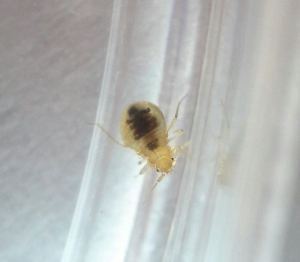
Swallow bugs are parasites of cliff swallows and occasionally barn swallows. Bed bugs swallow bugs and bat bugs are among 5 species of a family of bloodsucking insects in Colorado. Unlike bed bugs which are commonly active year-round within homes, swallow bugs are typically dormant during periods when swallows are not present for nesting purposes. Swallow bugs emerge in late winter to early spring anticipating the return of their swallow hosts. During this time, humans may experience bites and infestations of swallow bugs seeking meals when their host is unavailable. Swallow bug infestations may also occur in the event that nests are abandoned although typically, during that time of year, swallow bugs become dormant waiting the return of the birds in the spring. Swallow bugs are nearly identical to bed bugs in appearance until further examined under a microscope where their differences can be evaluated including the length of hairs and antennae segments. Swallow bug adults are roughly 3/16 of an inch in length and reddish brown in color. Immature swallow bugs (nymphs) may be much smaller and tan or red in color depending on how recently they have obtained a blood meal. Like their bloodsucking relatives, swallow bugs are flightless and have a flattened, oval shape.
Swallows are a federally protected, migratory species. They build gourd shaped nests out of mud, typically under eaves and overhangs of buildings and homes. Nest building should be discouraged by removing incomplete nests to encourage relocation. Once a nest is complete and the process of raising young begins, disrupting a nesting swallow is in violation of federal law. Once nesting has concluded for the season, nests can be removed and residual insecticidal treatments can be applied by a pest control professional to eliminate swallow bugs from the exterior of the home. In the event that swallow bug activity is present within the structure, treatment with a residual insecticide by a pest control professional will likely be necessary in order to eliminate the infestation. Insecticides are, at times, highly toxic to birds and should not be applied in areas where birds are still active.